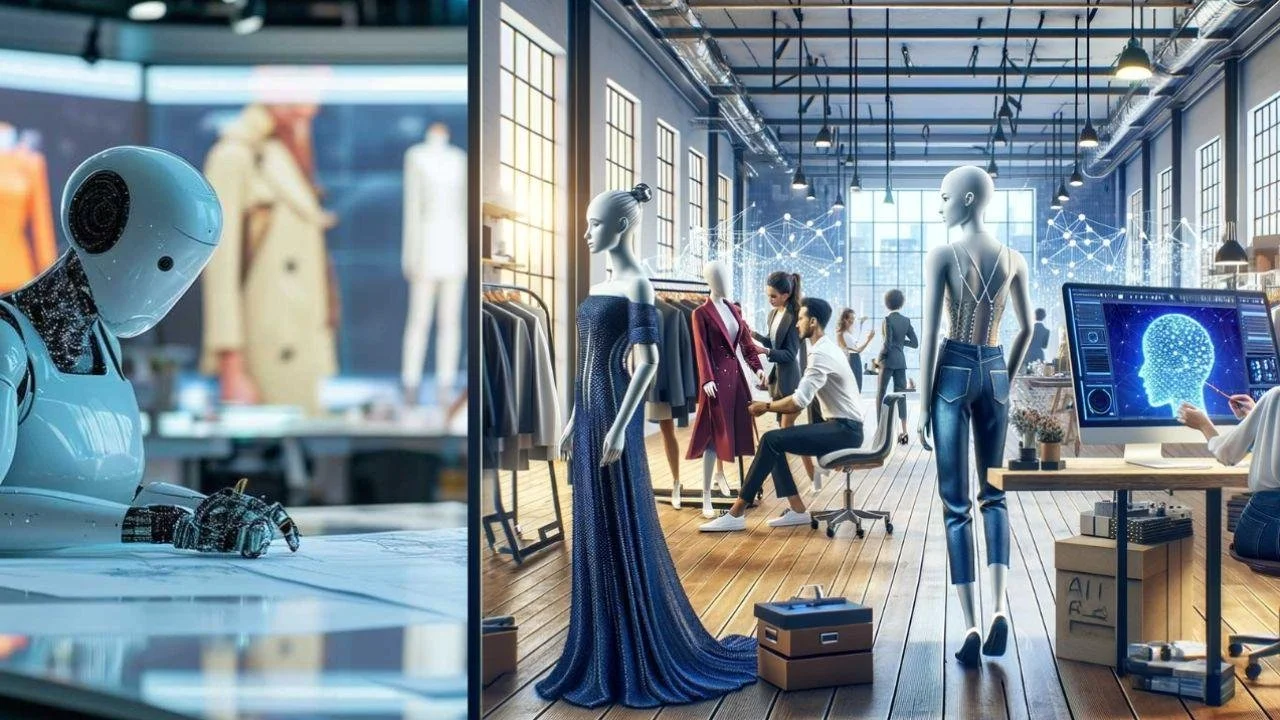Fashion Meets AI: How Tech Is Changing What We Wear
Fashion and technology might seem like opposites. One is rooted in creativity and self-expression. The other is driven by data and logic. But in 2025, they’re no longer separate worlds. Artificial intelligence is becoming one of fashion’s most powerful tools—reshaping how we shop, what we wear, and how trends emerge.
From virtual try-ons to predictive design, AI is changing style from the inside out.
Smarter Shopping, Less Waste
To begin with, AI is revolutionizing how we shop. Retailers are using it to make fashion more personal—and more sustainable.
For example, AI-powered apps can now recommend pieces based on your past purchases, body type, and even your mood. Instead of scrolling for hours, shoppers are offered curated options that feel just right.
This doesn’t just improve convenience. It also reduces returns, overproduction, and waste—major problems in the fast fashion industry. Brands like H&M and Levi’s are now using AI tools to better predict demand and avoid making clothes no one will wear.
Virtual Try-Ons Are Here
Gone are the days of guessing how something might fit. Thanks to AI and augmented reality, virtual try-ons are becoming the new norm.
Apps like Zeekit and AR integrations on Instagram and Snapchat allow you to "wear" outfits digitally before buying. You can see how a dress drapes on your body or how a pair of sunglasses frames your face—all without stepping into a fitting room.
For online shoppers, this tech is a game-changer. It boosts confidence, speeds up decisions, and reduces the dreaded post-purchase regret.
AI as Co-Designer
But AI isn’t just helping shoppers—it’s also becoming a creative partner for designers.
Increasingly, fashion houses are using AI to analyze trends, forecast colors, and even generate entire collections. The technology can sift through millions of images, fashion shows, and street style photos to spot emerging patterns.
Additionally, AI can help designers test different fabrics, cuts, and combinations digitally before making physical samples. This saves time and resources—and leads to more thoughtful designs.
Some brands are even using generative AI to create new prints or silhouettes. While humans still make the final call, machines are now part of the inspiration process.
Personalized Style Assistants
Moreover, AI is showing up in your phone—and your closet—as a virtual stylist.
Tools like Stitch Fix and The Yes (now part of Pinterest) use machine learning to suggest clothing that fits your unique preferences. Think of it as a style assistant that knows your taste, your size, and your budget.
Even Google and Amazon are getting into the game. Their platforms now include fashion-specific AI that helps users refine their looks or complete outfits based on what they already own.
And as smart mirrors and connected wardrobes evolve, your future morning routine might include an AI suggesting what to wear based on weather, schedule, and trends.
Influencer Style, On Demand
Another way AI is shaping fashion? Through the rise of influencer mimicry.
Social media platforms now use AI to decode viral fashion trends in real-time. If Matilda Djerf or Sofia Richie Grainge posts a look, AI can instantly scan, break it down, and suggest similar options to users.
Some platforms even generate “inspired by” outfits using pieces available at local retailers. It's like having a virtual stylist that works at the speed of the algorithm.
This changes how trends spread. No longer do you have to wait for fashion editors or seasonal shows—now, influence is instant, and AI helps it scale.
Fashion That Adapts to You
Wearable tech is also getting smarter. AI is being embedded into clothing to make it responsive and adaptive.
For instance, some fitness apparel can track your movement and give real-time posture feedback. Smart fabrics can regulate temperature, wick moisture, and even respond to light or pollution.
Designers are experimenting with garments that shift shape or color based on your environment. These aren’t just gimmicks—they’re early steps toward a future where clothes adjust to our needs throughout the day.
The Rise of Digital Fashion
At the same time, digital fashion is on the rise—and AI is fueling its growth.
More people are buying virtual outfits for avatars, gaming platforms, and social media content. Platforms like DressX and The Fabricant are creating AI-assisted garments that only exist in pixels. No physical waste, no storage needed—just creative expression in digital form.
Fashion brands are taking notice. Gucci, Balenciaga, and Adidas have all experimented with AI and virtual fashion drops. As the metaverse and AR tech continue to evolve, this space will only grow.
Ethical Questions Are Emerging
Of course, the rise of AI in fashion isn’t all seamless stitching.
There are growing concerns about data privacy, algorithmic bias, and creative ownership. For example, who owns a design if AI helped create it? And how do we ensure that recommendations don’t reinforce gender or racial stereotypes?
Furthermore, some fear that AI may replace jobs in design, retail, and manufacturing. While the tech creates new opportunities, it also raises important ethical questions.
Brands will need to navigate these challenges with transparency and intention.
What This Means for You
So what does all this mean for the everyday fashion lover?
It means:
More personalized shopping
Fewer returns and wardrobe regrets
New ways to experiment with style digitally
Access to trends the moment they break
Clothing that fits not just your body, but your lifestyle
But it also means staying informed. As AI shapes the future of fashion, consumers will need to think critically about the tools they use and the choices they make.
Final Thoughts
In 2025, fashion and AI are no longer strange bedfellows—they’re collaborators.
Together, they’re making style more personal, more efficient, and surprisingly more sustainable. From the way we discover trends to the way our clothes function, artificial intelligence is weaving its way into every layer of the fashion world.
The key will be using this tech not to replace creativity—but to empower it. Because at its best, AI doesn’t erase personal style. It enhances it.
